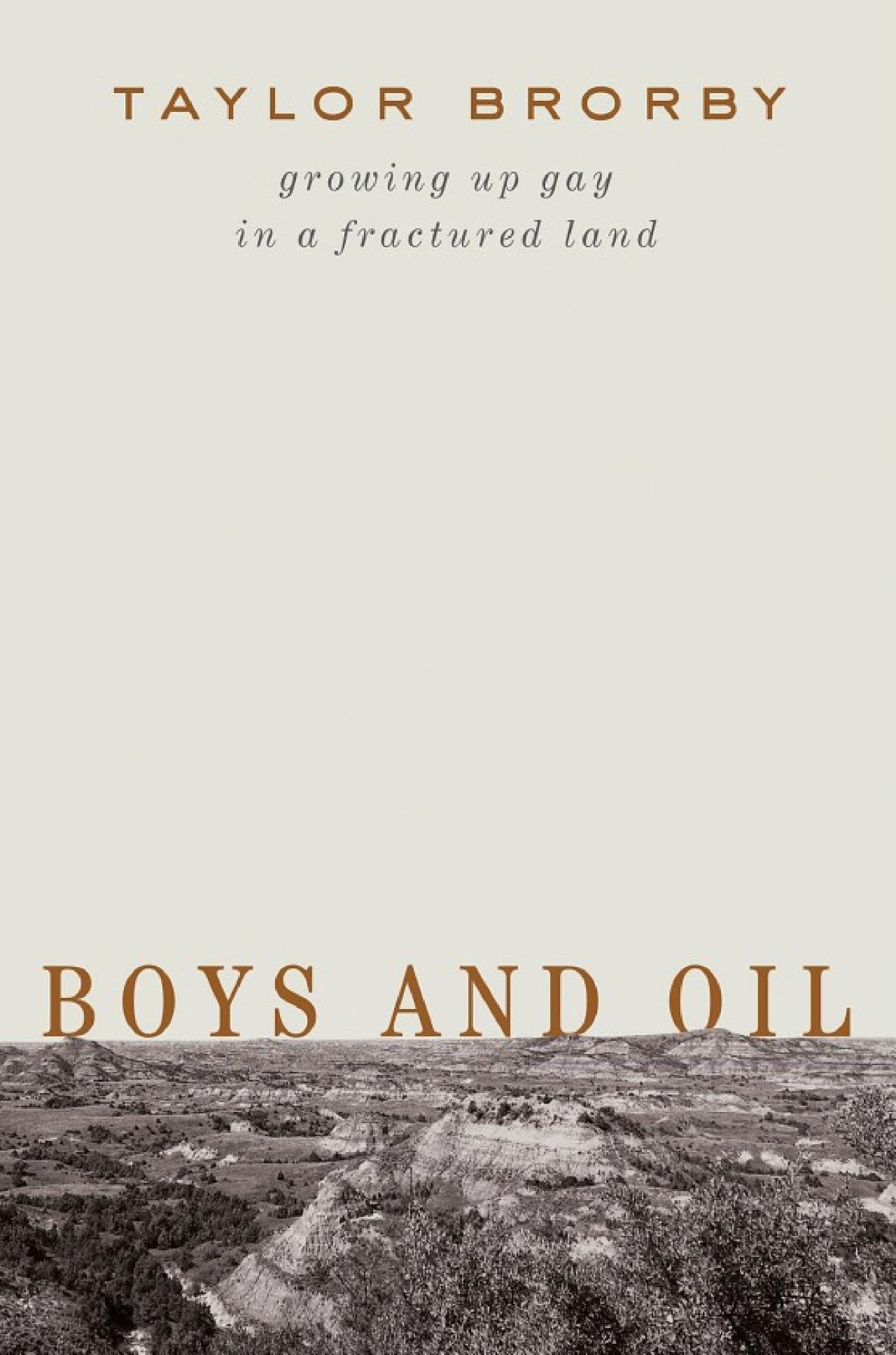The Soil We Step On, The Oil We Burn
Boys and Oil by Taylor Brorby. Liveright Publishing (2022). 352 pages. $27.95
The landscape we love is the result of millions of years of geological history: glaciers and inland seas, fault lines and rivers. A trillion beings, from jellyfish to mastodons, dying to become the soil we step on, the oil we burn. The result of migration, displacement, war, colonization, and religion. The result of the stories we hear. The stories we believe. The stories that create home and send roots so deep they cannot be torn away.
In his ground-breaking memoir, Taylor Brorby fights for the landscape and home he loves. Yet, as a gay man, he cannot deny the violent realities of the homophobic culture that he found himself floundering in as a boy. With no interest in such abusive childhood games as “smear the queer” or “king of the hill,” he found solace on Square Butte Creek, a tributary of the Missouri River. In this riparian greenspace, the young Brorby falls in love with the natural world: the muskrats, pike, herons and coyotes. Within the tall grasses of the prairie, Brorby felt at home.
Yet, in some of the most moving chapters of the memoir, it is away from the haven of the creek that Brorby realizes the danger in sharing the truth of his sexuality:
A small coal in my gut told me to look away, told me that the prairie could also burn boys who liked boys—that’s what we teach rural children. To be true, move away; find a home elsewhere; move along like a turtle slowly scraping away soil to reach the river, where you belong—someplace, but, no, not here.
But my body. My body, that of a redhead, was a landscape easy to read. My body flushed red when I was embarrassed and flared with hormones. Sometimes, I felt I just had the wrong kind of body.
Boys and Oil works through crystal-clear prose in tight and concise vignettes. While the technique is effective throughout the narrative, the form particularly serves moments of trauma. Via short form, Brorby moves the reader through moments of suicidal thoughts brought on by hiding his true self and eventually the trauma of being outed by a family member. By touching on these moments with intense clarity and brevity, the power of the writing is extended.
Within this trauma, Brorby investigates the places where he feels most comfortable. Sadly, this moves him out of the rural spaces he has grown to love, the places closest to the natural world. In the urban settings where art, music, literature, and a “gay presence” is more common, he feels most at ease. But always, Brorby feels the pull of the prairie. Just as the fauna of the Great Plains have been displaced—buffalo, pallid sturgeon, elk, and beaver—Brorby has trouble finding stable footing.
As a person of faith, Brorby’s memoir includes an exploration into his relationship with the Lutheran church. After attending St. Olaf’s daily chapel in undergrad where “Ezra Pound and E. E. Cummings [were] quoted as often as St. John or Jesus Christ,” Brorby was drawn to the progressive thinking of the denomination’s most liberal churches, intellectual rigor of theological study, and the assumed job security that would follow seminary. While he was at St. Olaf, the Lutheran Evangelical Church, the church of his childhood, approved an openly gay clergy in 2009. This historic development made the church—a place where he had traditionally felt ostracized—a place where he felt welcome.
But perhaps what makes Brorby’s memoir the most valuable and timely is his linking the landscape of North Dakota with the bodies of gay men—along with those of women, Indigenous people, and Brown and Black people—to the destruction of the land, showing that the violence done to these groups is mirrored in the ravaging of the land for energy extraction and industrial agriculture. For instance, the murder of Matthew Shepard hovers permanently over the horizon:
Matthew Shepard got assaulted after visiting a bar, beaten on the backroads of Laramie, hanged on a fence. In the morning, cars passing by thought he was a scarecrow, his body mangled, barely breathing.
Matthew, of course, was—still is—a scarecrow. His bloodied body is a semaphore, a signal to gay people: this will happen to you, too, if you come here.
The Bakken Oil boom, which reached its height in 2014, had transformed rural towns into miniature cities where liquor could no longer be sold because of the rambunctious nature of the workers. Brorby navigates a minefield of concealing himself—never going to a bar alone, never walking the streets alone—but is still assaulted and must perform a constant hetero-masquerade to escape mortal harm in the desolate lands of the oil fields.
While Brorby’s prose is succinct and at times even lyrical, he is, at his core, an activist writer. Having marched in Minneapolis and seen the passage of gay marriage in Minnesota, and been arrested at a peaceful protest against the Dakota Access Pipeline, Brorby fights for those things dearest to him:
My home in North Dakota, the nation’s sacrifice zone for its dependence on oil, seemed more like spectacle than a place to save. No one had been there—not really. No one would go there, except to the national park beyond the heart of the oil boom.
This is what makes Boys and Oil a ground-breaking book. The memoir sets the stage for more stories of the American West, of North Dakota, of extractive economies, to be told through a queer lens. Histories we need to hear. With the narrative control of Terry Tempest Williams, the sense of place of Rick Bass, and cultural interrogation of Pam Houston, Brorby adds a much-needed chapter to the canon of the Great Plains. Just as the West is fuller when the sage grouse perform on their native leks, the plains are fuller because of Brorby’s story.


